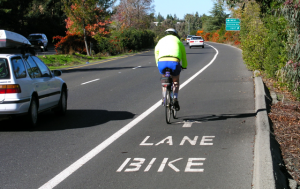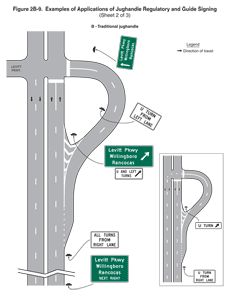
- Turnout areas marked on a two lane road how to#
- Turnout areas marked on a two lane road drivers#
- Turnout areas marked on a two lane road driver#
- Turnout areas marked on a two lane road manual#
- Turnout areas marked on a two lane road full#
If you have studied the handbook and scored 90% or more on the practice tests, you should know most of the answers. To succeed, you must break through the discouragement and just carry on. One simple mistake at the beginning of the test can make you feel like you want to give up. It is commonly known that applicants who fail their first examination attempt, do so because they misunderstand questions or rush through the test too quickly.

Turnout areas marked on a two lane road how to#
You may also learn how to pace yourself and read everything more carefully. With practice tests that are slightly more challenging, you can improve your test-taking “enduranceâ€.
Turnout areas marked on a two lane road driver#
It is designed to help you prepare and keep track of your progress as you study the Driver Handbook. Just like previous California DMV permit tests, this one has 30 essential permit questions from the DMV driving test.
Turnout areas marked on a two lane road drivers#
The "passing places" Truvelo mentions for single-lane roads in Scotland (some of which, if memory serves, are classified as primary routes and may have been built in the 1930's with 100% central government grant under the Crofter Counties programme) are a different kettle of fish altogether, first because the road width is much narrower, and secondly because there is no expectation or legal obligation for US drivers (the way there is in the UK) to back up to the last turnout passed to make room for someone coming from the other direction.4th California Practice Test – 30 Permit Questions Internationally, turnouts in the American sense are also used in New Zealand. The number of delayed vehicles on the "DELAY OF X VEHICLES ILLEGAL" sign is variable (example shown is 5, if memory serves) and is specified when ordering.
Turnout areas marked on a two lane road manual#
WSDOT's turnout signs were part of its Sign Fabrication Manual long before turnouts were added to the MUTCD in the 2009 revision. While California drivers may have the turnout rules "baked" into them as part of their driver training, Colorado has a lot of flat-state tourists that lack previous experience of turnouts and thus need special help not to be antisocial on mountain roads.) (I haven't located signs indicating legal obligation to use turnouts for either of these examples, but I remember Colorado doesn't use them on US 34, while the sign California has used in the past but has now abolished says "MUST USE TURNOUTS" or similar. The Colorado example is a failure because the notice given is far too short (500 feet instead of one-quarter mile), the turnout itself is not marked, and the striping and surfacing misleads motorists into thinking it is for emergency stopping only when in fact it is meant for ordinary traffic use.

The California example is successful (aside from the little gravel pocket that is easy to mistake for the turnout) because it has an advance sign, a sign marking the start of the turnout, and the turnout itself is a smooth lateral extension of the pavement cross-section for the through lanes. More commonly, in the California and Colorado cases, the road both is twisty and has steep grades, which means that in order for a turnout to be usable to drivers, there has to be plenty of advance notice and the turnout has to be on the same level and of the same pavement type as the through lanes in order for drivers to be sure of their ability to pull out and slow down (or stop if necessary) in a smooth and controlled fashion. In some cases, such as some of the Idaho turnouts, this can mean that the road is reasonably straight and flat but just too close to an upslope on one side and a dropoff on the other to allow a passing lane of adequate length to be built at reasonable cost. As such, they tend to be used on roads whose alignment is subject to extreme topographical constraint.
Turnout areas marked on a two lane road full#
Turnouts are essentially a cost-saving alternative to full passing lanes in mountainous areas. * Stress that it is obligatory to turn out if one is being followed by slower vehicles, whether or not one is already driving the speed limit * Give adequate advance notice of the turnout My experience has been that in order for turnouts to be effective, signing needs to do several things: I have used these turnouts, as well as a number along US 95 and SR 55 in Idaho and US 101 in Washington state (if memory serves, US 101 on the Olympic Peninsula has several).

US 34 in Big Thompson Canyon east of Estes Park-1 (advance sign), 2 (no sign provided)

SR 49 south of Auburn-1 (advance sign), 2 (not the actual turnout), 3 (the actual turnout)


 0 kommentar(er)
0 kommentar(er)
